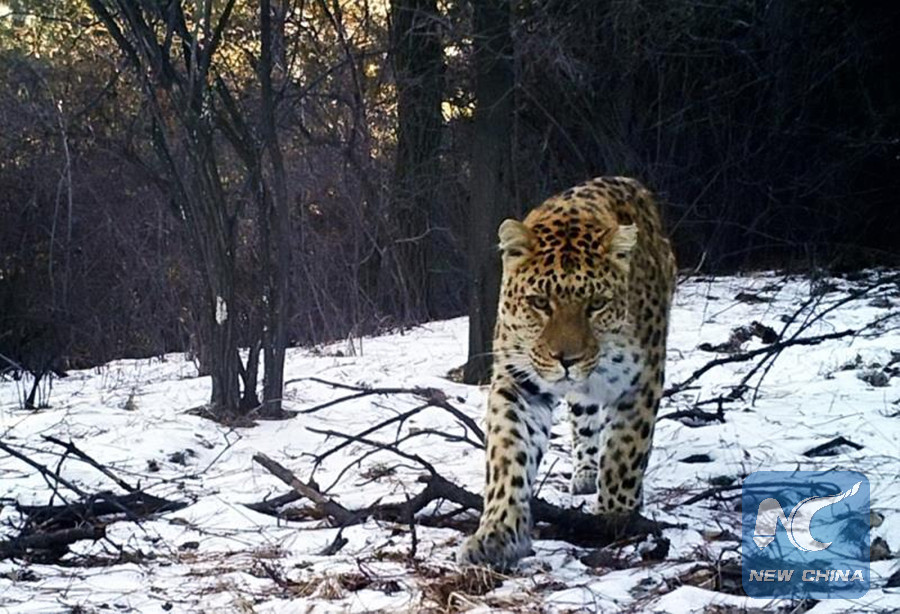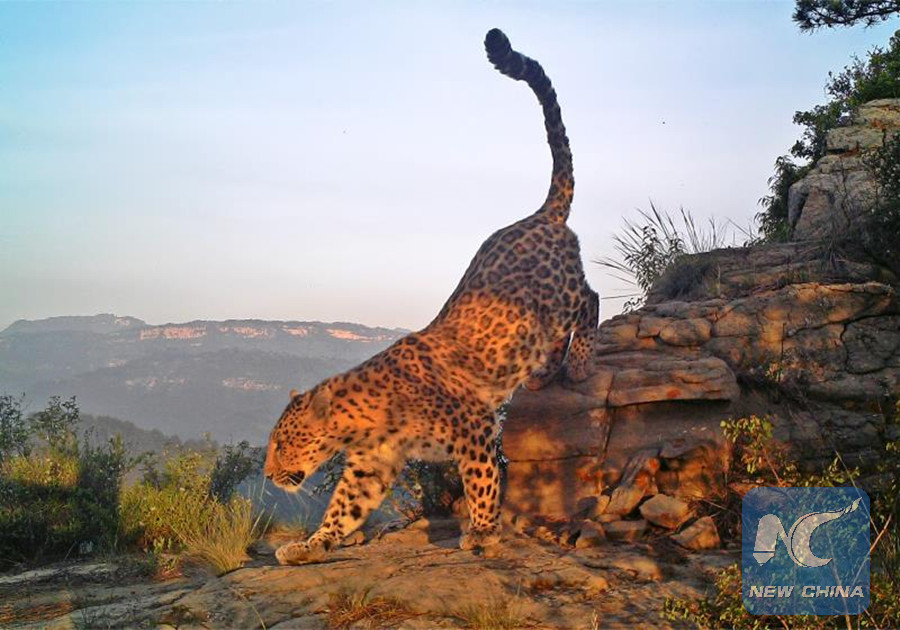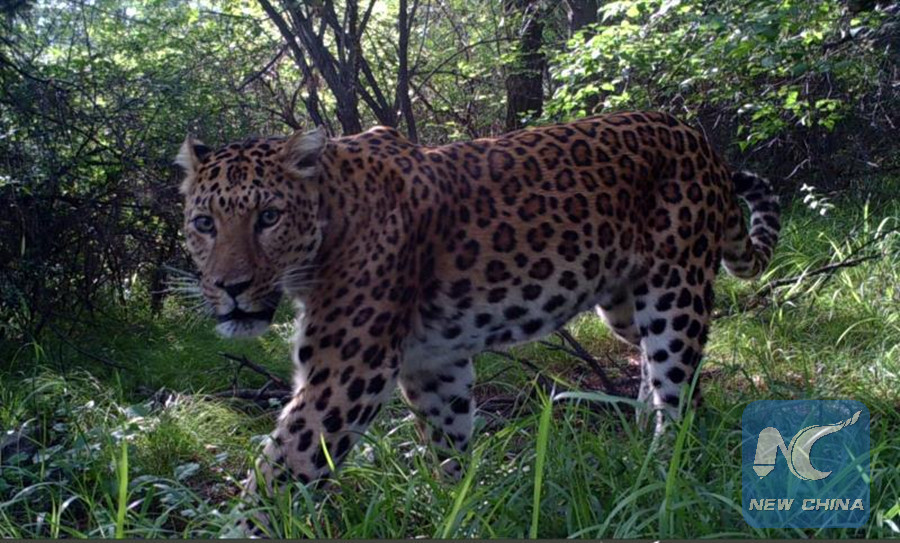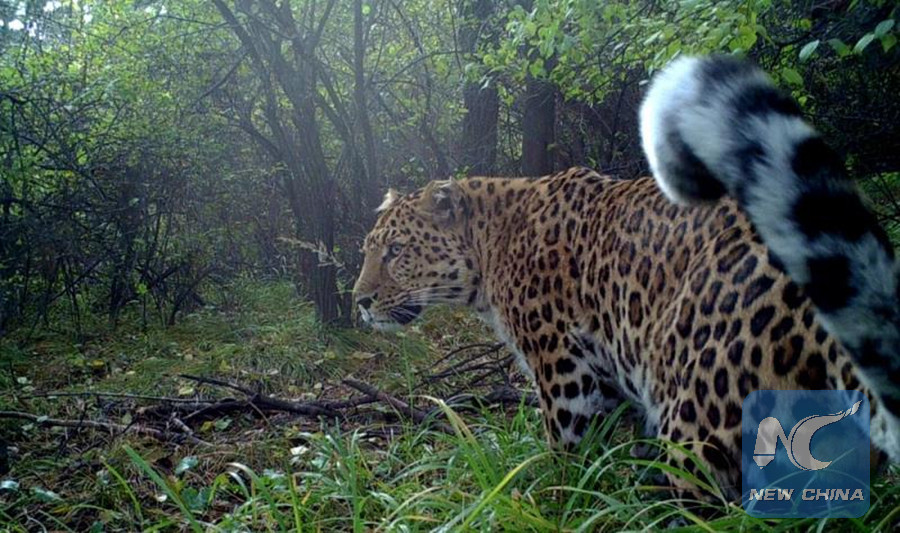
A North China Leopard is seen in the Taihangshan Mountain area, Heshun County, north China's Shanxi Province. (Photo provided to Xinhua by Feng Limin & Chinese Felid Conservation Alliance)
TAIYUAN, March 28 (Xinhua) -- Chinese conservationists have called for attention to the plight of the North China leopard, a subspecies of the Amur leopard that is peculiar to China.
The North China Leopard is one of the four leopard subspecies found in China and the only one to live exclusively there.
The main habitat of the leopards is found in Shanxi, Shaanxi and Gansu provinces.

North China leopard is a subspecies of the Amur leopard that is peculiar to China. (Photo provided to Xinhua by Feng Limin & Chinese Felid Conservation Alliance)
Due to decreasing forests and disturbance by human activity, the habitat of the leopard is shrinking and segmented, according to Feng Limin, deputy director of the State Forestry Administration Amur tiger and Amur leopard monitoring and research center.
From 2014, Feng has led a team from Beijing Normal University studying leopards in Heshun county, Shanxi Province. More than 100 sets of motion detectors and infrared cameras have been deployed.
In the past three years, camera traps have captured the leopards in a range of activities. One clip shows an unsuccessful attempt by a male to mate with a female.
"It is rare to see the leopards' courtship in the wild. This video is the only one in four years," he said.

A North China Leopard walks in the Taihangshan Mountain area, Heshun County, north China's Shanxi Province. (Photo provided to Xinhua by Feng Limin & Chinese Felid Conservation Alliance)
Feng hires forest rangers to take care of the cameras. They replace batteries and storage cards every two months and maintain the equipment. The rangers also deal with poachers.
"We have discovered several leopard families in the Heshun area, which shows the group is breeding well. We are coding the cats to ascertain the number of animals," said Feng.
The Chinese Felid Conservation Alliance and local animal-protection associations have stepped up protection of the leopard. North China leopards mainly feed on wild hogs, but wild hogs are hunted by farmers because they damage crops.

The main habitat of the North China Leopards is found in Shanxi, Shaanxi and Gansu provinces. (Photo provided to Xinhua by Feng Limin & Chinese Felid Conservation Alliance)
"When the number of wild hogs decreases, leopards switch to domestic animals for prey. We've had many reports of incidents involving leopards preying on calves," said Yang Xiaodong, director of Heshun environment protection association.
Since 2013, more than 210,000 yuan (about 33,000 U.S. dollars) has been paid to farmers who lost cattle.
"We will expand the scope of monitoring in the Taihangshan Mountain area to learn more about the elusive animal," said Feng.

